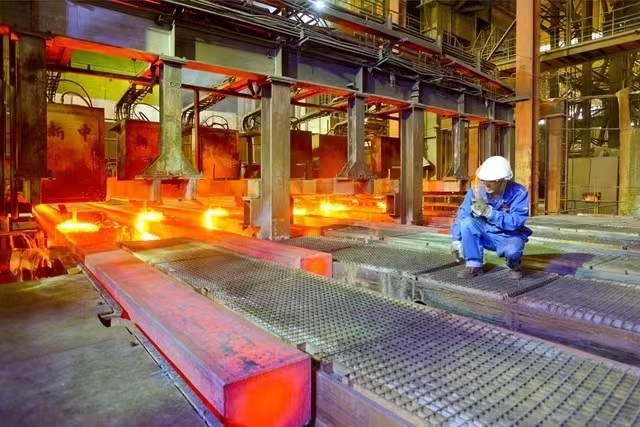Heat treatment applications-1
Heat treatment refers to a metal hot processing process in which the material is heated, kept warm and cooled in the solid state to obtain the expected structure and properties.
1. Normalizing: A heat treatment process in which steel or steel parts are heated to an appropriate temperature above the critical point AC3 or ACM, kept for a certain period of time, and then cooled in the air to obtain a pearlite-like structure. 2. Annealing: A heat treatment process in which a hypoeutectoid steel workpiece is heated to 20-40 degrees above AC3, kept warm for a period of time, and then slowly cooled with the furnace (or buried in sand or lime to cool) to below 500 degrees and cooled in the air. 3. Solution heat treatment: A heat treatment process in which the alloy is heated to a high temperature single-phase region and kept at a constant temperature to fully dissolve the excess phase into the solid solution, and then quickly cooled to obtain a supersaturated solid solution. 4. Aging: The phenomenon that the properties of an alloy change over time when it is placed at room temperature or slightly above room temperature after solution heat treatment or cold plastic deformation. 5. Solution treatment: fully dissolve various phases in the alloy, strengthen the solid solution and improve toughness and corrosion resistance, eliminate stress and soften, so as to continue processing and forming. 6. Aging treatment: heat and keep warm at the temperature of precipitation of strengthening phase, so that the strengthening phase precipitates, hardens and improves strength. 7. Quenching: a heat treatment process in which the steel is austenitized and then cooled at an appropriate cooling rate to cause the workpiece to undergo unstable structural transformation such as martensite in all or a certain range of the cross section.
8. Tempering: a heat treatment process in which the quenched workpiece is heated to an appropriate temperature below the critical point AC1 and maintained for a certain period of time, and then cooled in a method that meets the requirements to obtain the required structure and performance. 9. Carbonitriding of steel: Carbonitriding is the process of simultaneously infiltrating carbon and nitrogen into the surface of steel. Carbonitriding is usually called cyaniding, and medium-temperature gas carbonitriding and low-temperature gas carbonitriding (i.e. gas soft nitriding) are widely used. The main purpose of medium-temperature gas carbonitriding is to improve the hardness, wear resistance and fatigue strength of steel. Low-temperature gas carbonitriding is mainly nitriding, and its main purpose is to improve the wear resistance and seizure resistance of steel. 10.Quenching and tempering: It is generally customary to refer to the heat treatment of quenching and high-temperature tempering as quenching and tempering. Quenching and tempering is widely used in various important structural parts, especially connecting rods, bolts, gears and shafts that work under alternating loads. After quenching and tempering, tempered troostite structure is obtained, and its mechanical properties are better than those of normalized troostite structure with the same hardness. Its hardness depends on the high-temperature tempering temperature and is related to the tempering stability of the steel and the cross-sectional
size of the workpiece, generally between HB200-350.
